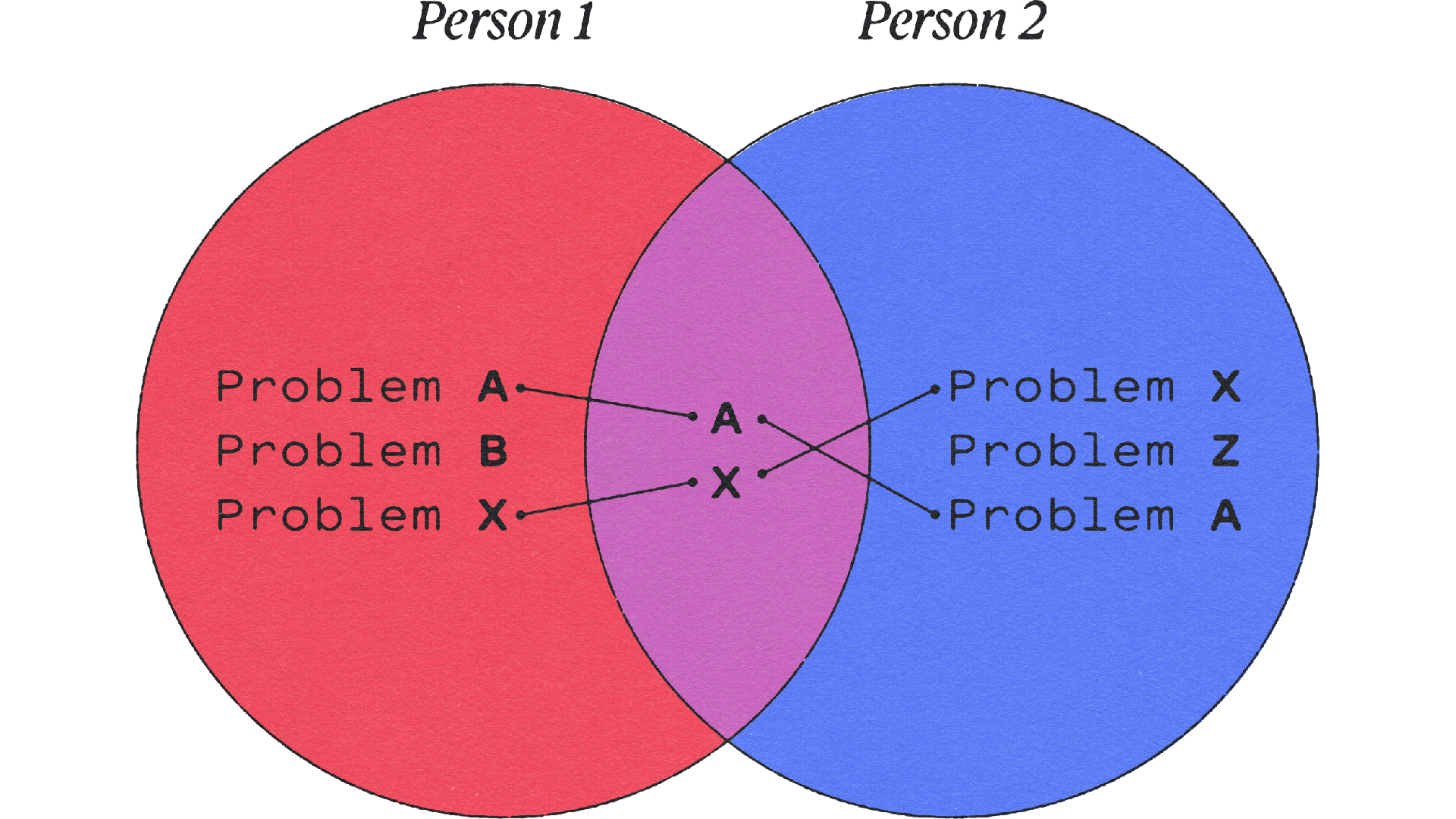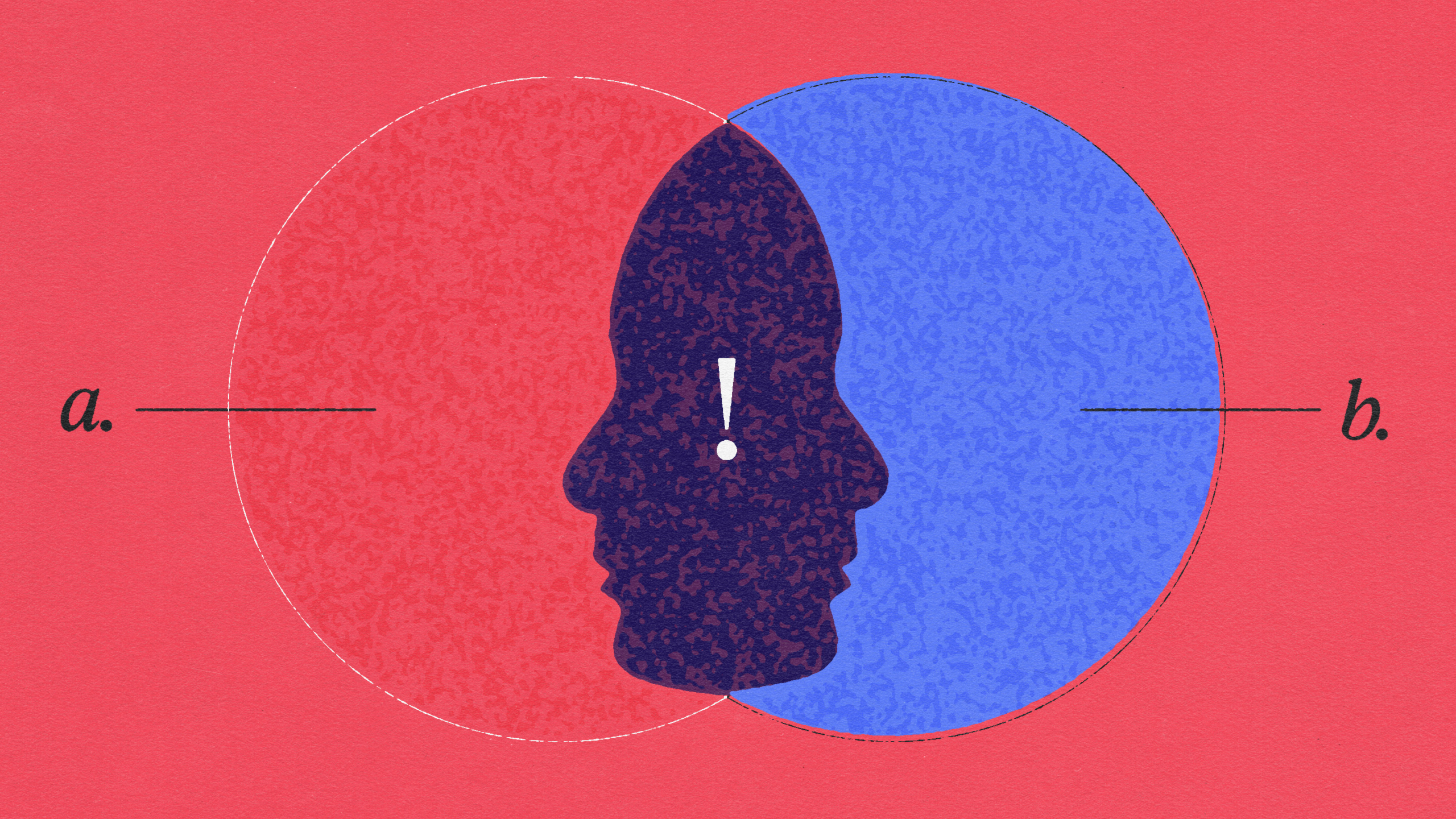How many times have you been stuck in a thinking rut, running through every possible scenario to problem solve, yet you keep getting stuck at the same spot? It’s human. Even the most creative thinkers face these types of challenges, but a unique design-research method may be the answer to overcoming mental obstacles: analogous research.
What is analogous research?
Analogous research is a design-research method that finds common challenges through uncommon contexts. It encourages you to shift focus by connecting with peers outside of your usual team on a deeper conversational level, offering a renewed perspective. The more you get to know someone and consider their view, interchangeable business practices become apparent, and you’ll see how analogy learning does the grunt work for you. The discovery process is in the details, so as you connect, it’s exciting to watch how many shared concerns pop up and what you can learn from one another.
It’s basic protocol to rally our usual team when we’re faced with trials, but analogous research inspires us to branch outside of our comfort zone. We are all more alike than we realize with people on opposite ends of our organization, just in different ways. Before we get into the details of an analogous research plan, ask yourself, “Who else does what I do, but in a totally different way?”
Plan your analogous research journey
Each person within your organization has a unique perspective, and every perspective holds value. But in order to guide talks with a research partner, you’ll need a few starting points. The analogous research process excels at clearing pathways toward greater information-sharing and meaningful collaboration. Another benefit of analogy design is the way it builds empathy through shared experiences and gives a purposeful reference point to think back on for years to come.
Is there someone in your organization you’ve admired for their leadership skills? Departments aside, it’s the person you’re looking at here. It won’t alter your outcome if you’re working to build L&D and they’re working on shipping logistics. Analogous research will reveal how two individuals in seemingly opposite roles share plenty of junctions.
Analogous learning takes into consideration that 80 percent of new ideas are based on a preexisting concept, but when you make the research suit your needs, you’ll uncover your own personalized and innovative solution. If you’d like to know more about where that 80 percent number comes from, check out the theory behind the Pareto Principle.
At this point, analogous thinking may sound like something you’ll need a weeklong offsite to complete as a team, but we promise that you can have an analogous research experience over a cup of coffee or a quick Zoom meeting. Are you ready to get started?
Design Things Right: How to Brainstorm Better Learning Solutions
Looking for more ways to inspire your thinking? In this on-demand webinar, learn how to conduct strategic, effective brainstorming sessions that spark creativity and lead you to the optimal solution for your learners.
Access the webinar→How to conduct analogous research
There is no one absolute way to put analogous thinking into action, but one of the simplest approaches utilizes the tried and true Venn diagram. Paper and pen or whiteboard and marker, take it from here. If digital brainstorming works best for your analogous research, check out FigJam—an online whiteboard for teams to ideate and brainstorm together. Figjam has become a critical tool for how we collaborate.
Meet in the middle
Go ahead and draw your Venn Diagram. In the circle on the left, jot down the biggest challenges facing your team. Time spent on this portion of analogous research is meant to get your thoughts out without too much processing or editing. Think of it like journaling. The elaboration process comes later.

In the circle on the right, have your interviewee write out their most pressing challenges. Next, you’ll take a look at each other’s circles, and let the words resonate and settle with you for a moment. Now look for commonalities to place into the area of intersection. Do you see any correlations? From here, you can take overlapping struggles and similar points and transfer them to a fresh slate of your choosing, physical or digital.
Your analogous research may pop with obvious shared experiences, or you might need longer to review language and analyze further. You’re working for the same organizational effort with your research partner, and analogy thinking builds a bridge between opposing areas of your business. Does your research partner have any insight into your challenges from their perspective, and do you have any experience with their points? Have a conversation and offer up what worked for you, brainstorm, or even connect them to another person you know who has dealt with what they’re facing.
You don’t have to analyze the common threads found in your diagram’s intersection at once. Feel free to sit with it for a while and review it later—alone or with your partner. Expressing your view through conversation and hearing a fresh perspective in return could be enough to spark creativity for one day, so splitting sharing and analysis into two parts to review separately works, too. Analogous research is a concept, but you hold the power to make it work best for you.
If you run up against mental barricades, try incorporating convergent and divergent thinking processes to identify problems and solve them by whittling down discovery and defining fundamentals—understanding these processes is an excellent prerequisite for getting the most out of analogous research. Analogous learning is a form of divergent thinking, so it makes sense to give your brain a break before moving into convergent thinking.
Wonder more
One of our core values at Maestro is “Wonder more: Possibilities are limited only by your sense of curiosity.” Analogous research is the epitome of wonderment. It draws a line between our ruminating issues and uncovers common patterns for us to marvel at with renewed senses.
No matter how amazing of problem solvers your usual team is, stepping outside protocol with analogous research refreshes your sense of clarity and unlocks innovative thinking. Analogous learning can even inspire your learner audience and offer them a transformed perspective of their very own. So, when you feel like your mind is running up against a wall and creative thinking is at an all-time low, give your brain a little rest, and look into someone else’s.
Want to learn more about building creative-thinking skills? Subscribe to our newsletter today.
Think of your inbox as a treasure trove of inspiration. Subscribe now to take your team to a higher level of learning power.
Subscribe→